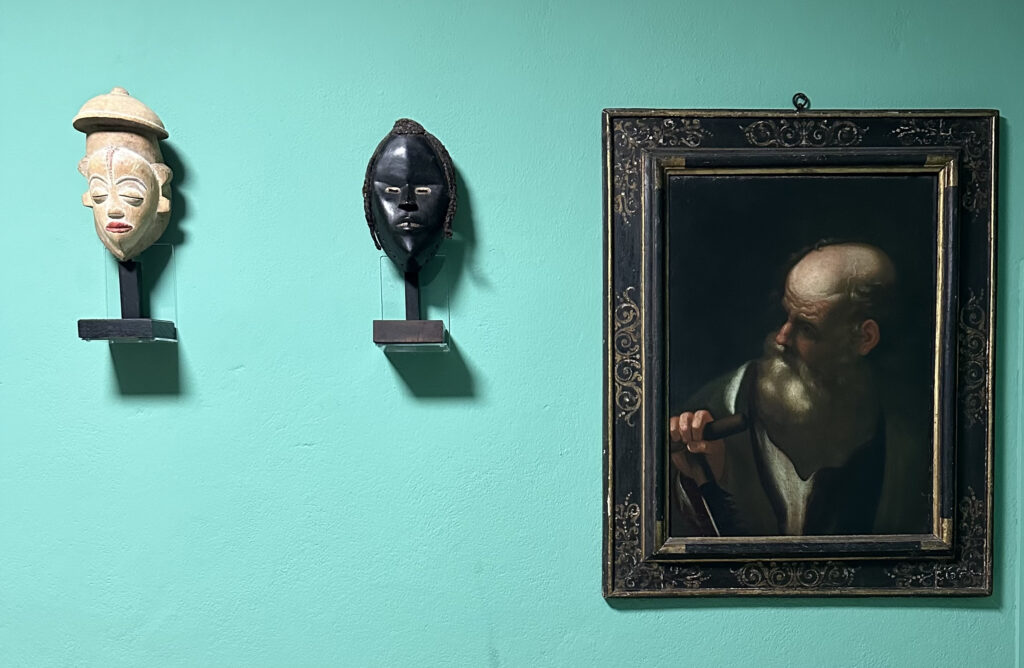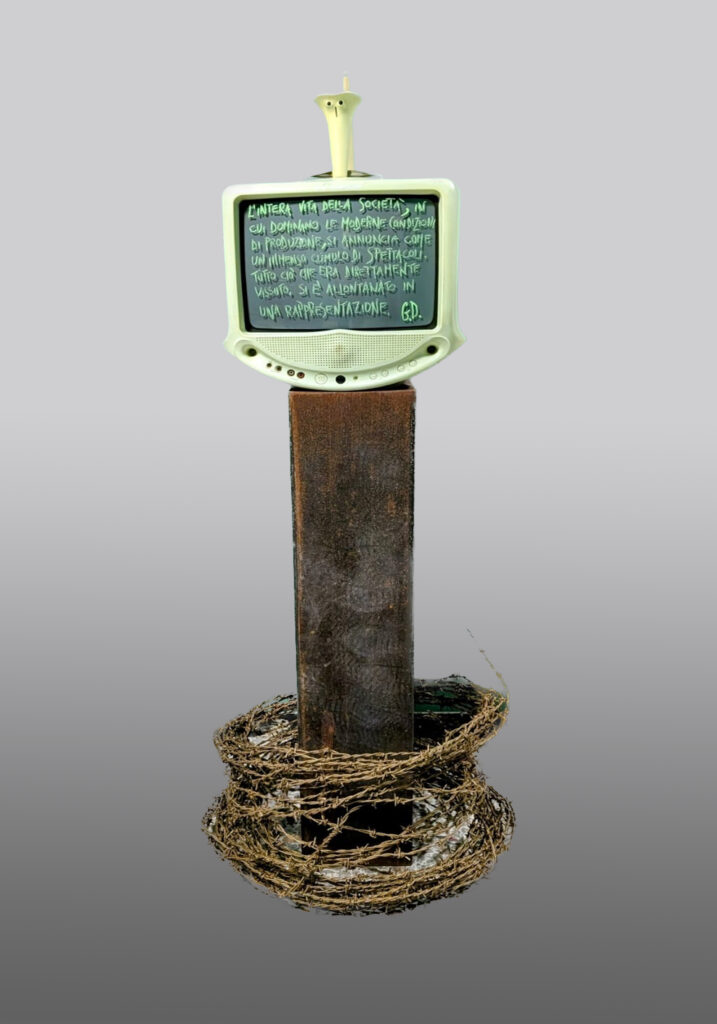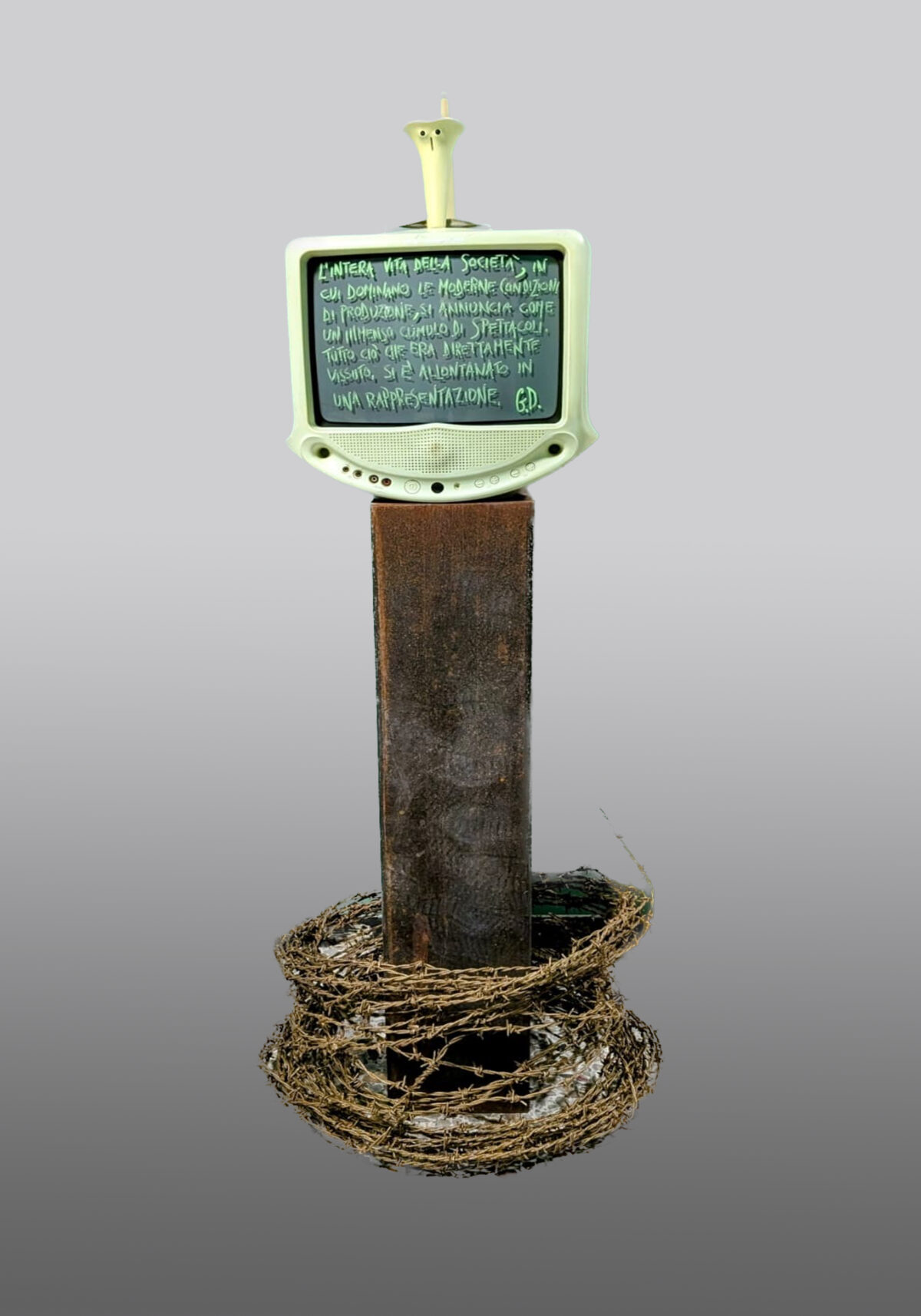
Cosio d’Arroscia, casa degli artisti, sala verde. Fino al 30 settembre 2024
1. Sapere vedere. C’è un aspetto centrale ed indispensabile nell’esperienza percettiva? Se esiste è legato allo sguardo. Non mi riferisco al semplice guardare, ma a tutto ciò che implica sapere vedere. Ci si guarda dentro prima di guardare fuori, cosi come ciò che vediamo nutre il nostro essere più intimo. E spesso la realtà non è ciò che appare .
Un corpo, un volto definiscono un carattere, lo animano rimandando ad un grumo di sensazione che nascono dalla inesorabile ed istintiva associazione di idee, conferendo consistenza ontologica alla forma. Senza ricorrere alle esasperazioni di Lombroso si può dire che la, fisiognomica abbia un suo perché. Sono gli occhi a guardare? No, gli occhi sono strumento, e come diceva Saint-Exupéry, l’essenziale è invisibile agli occhi.
Ma gli occhi parlano, sono lo specchio dell’anima e ci dicono chi siamo. E altrove? Nel mondo degli “altri” come si evoca la potenza dello sguardo? Uso l’espressione potenza perché lo sguardo profondo – quello alla Saint-Exupéry per intenderci – non prevede necessariamente una osservazione diretta della realtà per come si manifesta, ma per come essa agisce in noi evocando uno stato di coscienza.
In realtà la funzione profonda non cambia: anche il realismo dell’arte occidentale funziona solo se evoca stati di coscienza, esattamente come l’alfabeto sintetico usato dai linguaggi degli artisti extraeuropei.
Ecco che le fessure di una maschera Dan o Punu, lo sguardo dipinto di un antico sapiente evocato in un dipinto del XVII secolo parlano di sentimenti che ci appartengono, che riconosciamo grazie ad un misterioso linguaggio di forma, colore e materia che dà vita ed emozione; è il risultato del lavoro dei nostri neuroni/specchio, e ci rende in un lampo consapevoli di un Mistero più grande di noi, anche se fatto su misura per noi, per essere compreso da noi, per essere usato da noi, per aiutarci a capire e governare ciò che di sorprendentemente misterioso ci accade.
2. Oltre la società dello spettacolo. Un antico dipinto, due maschere africane, la tv Zéo disegnata da Philippe Stark per Thomson negli anni 90 del secolo scorso, completa di telecomando. Sono questi gli elemento alfabetici usati da Giuliano Arnaldi ed Emilio Grollero per avviare un dialogo sulla differenza tra vedere e guardare, più in generale tra agire e subire nella società dello spettacolo. La vecchia tv è come si dice oggi un “pezzo di design”. Non essendoci segnale gracchia ed emette uno sfarfallio costante, efficace testimone della subalternità passiva e totale dello spettatore. Il telecomando già rimanda ad altro; è disegnato per farci pensare d’istinto ad una faccia, curiosamente ospitata in una forma fallica. La potenza evocativa emerge però in modo consapevole nelle altre opere esposte, pur nella diversità degli alfabeti usati. Le antiche maschere Punu e Dan parlano la lingua archetipale delle culture africane, che affidano all’essenzialità il compito di evocare stati di coscienza come l’altro elemento, un talismano etiope posto al centro della stanza; rimanda ad antiche parole destinate a curare il corpo e l’anima. L’antico dipinto attribuito ad Assereto dichiara invece il proprio messaggio in modo esplicito, descrittivo, secondo la tradizione occidentale. In entrambi contesti bisogna sapere – e volere – vedere, rifiutare il ruolo inumano di spettatori per rivendicare e praticare quello di attori. E’ il potere antico della parola – dal latino tardo parabŏla , intesa come insegnamento, discorso -, che implica la responsabilità della scelta, a fare la differenza tra società umana e società dello spettacolo. Prende corpo il monito scritto da Guy Debord nel 1967, e riscritto oggi sullo schermo della TV esposta da Emilio Grollero; la televisione era agli albori e i social nemmeno immaginati: “l’intera vita della società, in cui dominano le moderne condizioni di produzione, si annuncia come un immenso cumulo di spettacoli. Tutto ciò che era direttamente vissuto, si è allontanato un una rappresentazione”.

L’installazione di Emilio Grollero
1. Knowing how to see. Is there a central and indispensable aspect in the perceptual experience? If it exists it is linked to the gaze. I’m not referring to simply looking, but to everything that involves knowing how to see. We look inside before looking outside, just as what we see nourishes our most intimate being. And often reality is not what it appears.
A body, a face define a character, animate it by referring to a lump of sensation that arises from the inexorable and instinctive association of ideas, giving ontological consistency to the form. Without resorting to Lombroso’s exasperations, it can be said that physiognomy has its own reason. Are the eyes watching? No, the eyes are instruments, and as Saint-Exupéry said, the essential is invisible to the eyes.
But the eyes speak, they are the mirror of the soul and tell us who we are. And elsewhere? In the world of “others” how is the power of the gaze evoked? I use the expression power because the profound gaze – that of Saint-Exupéry so to speak – does not necessarily involve a direct observation of reality as it manifests itself, but as it acts in us, evoking a state of consciousness.
In reality, the profound function does not change: even the realism of Western art only works if it evokes states of consciousness, exactly like the synthetic alphabet used by the languages of non-European artists.
Here the cracks of a Dan or Punu mask, the painted gaze of an ancient wise man evoked in a 17th century painting speak of feelings that belong to us, which we recognize thanks to a mysterious language of shape, color and matter that gives life and emotion ; it is the result of the work of our neurons/mirrors, and makes us instantly aware of a Mystery bigger than us, even if tailor-made for us, to be understood by us, to be used by us, to help us understand and govern the surprisingly mysterious things that happen to us.
2. Beyond the society of the spectacle. An ancient painting, two African masks, the Zéo TV designed by Philippe Stark for Thomson in the 90s of the last century, complete with remote control. These are the alphabetical elements used by Giuliano Arnaldi and Emilio Grollero to start a dialogue on the difference between seeing and looking, more generally between acting and suffering in the society of the spectacle. The old TV is, as they say today, a “piece of design”. Since there is no signal, it croaks and emits a constant flicker, an effective witness to the passive and total subordination of the spectator. The remote control already refers to something else; it is designed to make us instinctively think of a face, curiously housed in a phallic shape. However, the evocative power emerges consciously in the other works on display, despite the diversity of the alphabets used. The ancient Punu and Dan masks speak the archetypal language of African cultures, which entrust essentiality with the task of evoking states of consciousness like the other element, an Ethiopian talisman placed in the center of the room; refers to ancient words intended to heal the body and soul. The ancient painting attributed to Assereto instead declares its message in an explicit, descriptive way, according to Western tradition. In both contexts one must know – and want – to see, reject the inhuman role of spectators to claim and practice that of actors. It is the ancient power of the word – from the late Latin parabŏla, understood as teaching, discourse -, which implies the responsibility of choice, that makes the difference between human society and the society of the spectacle. The warning written by Guy Debord in 1967, and rewritten today on the TV screen exposed by Emilio Grollero, takes shape; television was in its infancy and social media was not even imagined: “the entire life of society, in which modern production conditions dominate, announces itself as an immense accumulation of shows. Everything that was directly experienced has receded into a representation.”
Giuliano Arnaldi, Cosio d’Arroscia 5 agosto 2024
